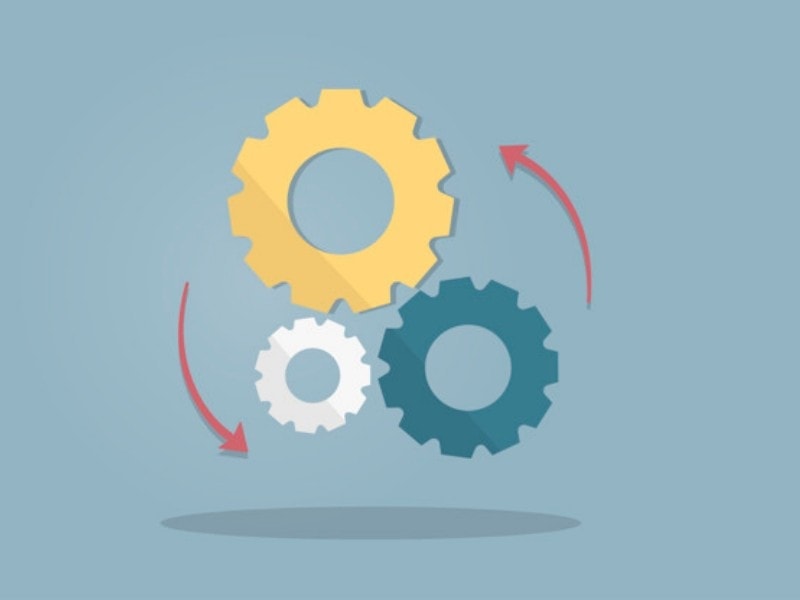Controlling is one of the most basic functions of management, like planning, organizing, staffing, etc. Controlling is an important management function, and without controlling management can’t ensure the desired results.
In this article, you will learn all about the controlling function of management.
Table of Contents
Definition of Controlling
According to Brech, Controlling is a systematic exercise which is called as a process of checking the actual progress or performance against the standards or plans with a view to ensure adequate progress and also recording such experience as is gained as a contribution to possible future needs
What is controlling in Management?
Controlling means the management of the organization is responsible for deciding predetermined standards and making sure that performance of the employees match with the standards set by the management and in case if the performance of employees does not match with standards then taking required corrective measures.
The role of the management of an organization is to make sure that the goals of the organization are achieved as planned and on time. Out of the many functions of management, the control function is one of the most important functions of the organization.
Controlling means giving instructions to employees and making sure that the instructions are being followed as desired by the management.
The management of the organization makes sure that the resources of the organization are being used properly and are being used for the growth of the organization and are not being wasted in any way.
Controlling employees of the organization is an important skill of a manager. A manager can’t play his role efficiently if he is not good at controlling his team.
By controlling his team properly, he can make sure that there is coordination among his team members and by having proper control on the team, he can plan effectively for the future projects. Management control has different types so as to enable the management to choose the form of control depending upon the situation at hand, as it is one of the most important functions of management.
Types of Control
There are different types of control in an organization that are needed to monitor and regulate organizational processes. The various types of controlling are as follows
- Feedback Control: Feedback control involves collecting information about a finished task, assessing the information and improvising these type of tasks in the future. Example: Managers may take feedback from their employees and improve the processes based on the feedback.
- Concurrent Control: Concurrent control is real-time control wherein the problems are checked in real time and the action is also taken in real-time to avoid any losses. A typical example is Real time traffic analysis of a website in case server goes down.
- Feed Forward Control or Predictive control: A preventive control is one where you foresee the problem before it occurs and therefore you are able to prevent it.
- Steering control: As with any vehicle that is on the road, a steering control is one which steers the process onto the right path. In this scenario, the process is ideally an ongoing process and is continually steered in the right direction. It is a combination of feedback control and concurrent control.
- Yes / No Control: Most typically used in production scenarios, Yes and No control are like lasers on an assembly line. Either the product is up to quality, or it is not. Similarly, the Yes/No control is a simple control that decides whether an activity should proceed or not.
- Budgetary control: Budgetary control is a type of financial control that controls organizational resources and budgets. This can be done by observing forecasted budget vs actual budget usage and bringing control mechanisms to stop overutilization of the budget.
- Operational Control: Day-to-day activities are the operations that take place in any organization and the more productive an organization is, the better its operations. Thus, operational control manages the day-to-day activities and processes to ensure efficiency and regulation.
- Strategic Control: Every organization has long-term goals and objectives. Strategic Control observes the strategic planning and organizational directions and controls the company’s alignment with its own goals.
- Objectives control: SMART goals are best for any organization and Objectives control utilizes the principles of Management by objectives. Goal-setting is extensively used to give responsibility to employees and control them via Objective control.
Features of Controlling in management
1) Controlling is a dynamic process
Controlling is a dynamic process. A manager is required to take a different course of actions when an employee fails to match the standards of performance. A manager should have the skills to decide how to react to a certain situation.
For example, if an employee is absent frequently, then the manger first should talk with him and ask for the reason of his absenteeism and try to do something about the problem, and if the problem persists then, he should take some strict action.
Similarly, the course of corrective action would be different for the employee who does not perform as per the standard frequently than the employee who has failed to meet the performance standards for the first time.
2) Controlling is an end function
Controlling is an end function because it comes into action once the task is completed. The performance standards are decided before the work is assigned to the employees and once the work is complete the performance of employees is compared with the standard performance, and if the performance of the employees is same as that of the standard performance then no actions are required to be taken but in case the performance doesn’t match then the manager is required to take the corrective actions.
Therefore, it is not wrong to say that controlling is an end function.
3) Planning and controlling go hand in hand
It is not wrong to say that planning and controlling work together. A manager is required to plan so that he can control the actions of employees in order to achieve the desired outcome and achieve organizational goals.
For example, if a sales manager makes a target to make sales of 5 million in one quarter with five salespersons working in his team, then he will give the target of 1 million to every salesperson and will control their actions to achieve the desired results.
Now you understand that without planning, controlling is meaningless, and without controlling planning can’t go as desired.
4) Controlling is a pervasive function
Controlling is a pervasive function because it can’t be escaped at any level of management. All management is required to control at all levels.
How can effective management control drive organizational success?
Recent studies reveal that organizations with strong management control systems can achieve up to a 25% improvement in productivity. According to Harvard Business Review, firms that implement rigorous control mechanisms not only enhance operational efficiency but also see a marked reduction in resource wastage, leading to increased profitability and competitiveness. This data underscores the importance of effective control systems in achieving organizational goals and ensuring sustainable growth.
For businesses seeking to enhance their control processes, one actionable tip is to integrate advanced data analytics tools into their management control systems. Tools like Tableau and Power BI enable managers to visualize performance metrics in real-time, facilitating quicker decision-making and more precise adjustments. As noted by McKinsey & Company, organizations leveraging data-driven control strategies experience better predictive capabilities and are more adept at anticipating and mitigating risks, which contributes significantly to staying ahead in competitive markets.
For example, a top-level manager will control the actions of a middle-level manager and supervise the performance of the manager and similarly, a low-level manager is answerable to a middle-level manager.
In this way, the controlling is done at all levels. However, there might be a difference in the methods of control, and different corrective actions are taken when the performance of the employee is not as desired.
5) Controlling is looking forward
A manager can control the performance of an employee by controlling the past actions. A manager keeps track of the performance of the employee, so that follow-up can be made when the time comes to compare the performance.
Process of Controlling in management
The process of controlling in management consists of four steps. All of these steps are necessary to be followed in order to control effectively.
1) Formation of standards
The first step of the controlling process is the formation of standards. The manager first prepares a report stating the standards and expected performance from the project given to employees.
The standards are not decided by randomly picking a figure, but it is decided on the basis of the past performance of employees and comparing actual performance of last season and the condition of the market. Before revealing the expected standards with employees and giving them the target, the standards are approved from the senior management.
After getting tangible standards and the approval of the management, these standards are discussed with the team members, and the target is given to each team member. A preformed standard gives a common goal to employees to work towards.
2) Measurement of actual performance
Once the task is completed, it is the job of the manager to measure the performance of the employees. The manager will analyze the performance of each employee and ask them to submit their report of work.
3) Comparison of actual performance with the standard performance
After the measurement of the actual report, a comparison of measuring performance is made between the actual performance and the pre-decided standard performance and the difference is calculated between both the performances and a report is generated after the analysis of the performance of all employees.
4) Taking corrective actions if required
After comparing the standard performance with the actual performance of employees. The difference is calculated.
Then the performance of each employee is analyzed, and the difference between the target given to them and the percentage of target achieved by them is observed, and the required actions are taken as per the policy of the company and the past performance of the employee.
For example, no actions would be taken against the employee whose performance has been good in the past few months. Taking corrective actions is important; otherwise, employees would start taking their job lightly, and there are chances that you might lose business in the future.
Importance of controlling
1) Controlling Motivates Employees
Controlling doesn’t mean just giving orders to the employees. It means that the manager guides his employees throughout the process and provide help to them where they need.
He also makes sure that each employee is doing his work with proper dedication and also scolds them if they are not putting 100% efforts.
In addition to this, when a target is given to employees, it gives them a goal to work. The target motivates them to go to work and work hard to achieve the target. A motivated employee ends up performing much more than his actual capacity.
2) Controlling Makes the efficient use of resources
Controlling in management helps in the proper use of resources available in the organization.
Under controlled environment, employees make the proper use of resources and are careful while using them. With a management control system, decision-makers can make sure that the employees get maximum output out of the available resources to them.
3) Controlling creates discipline in the organization
Another importance of controlling in the management process is the discipline in the organization. Discipline is necessary to attain the goal in the desired time and with available resources. People tend to become careless if their actions are not controlled, and if they know that there is nobody to questions them.
By controlling management not only control the actions of employees but also makes sure that they do that maximum output can be obtained.
4) Controlling ensures coordination of action
In a large organization, there are hundreds of employees who work together. Different work is going on different departments at the same time. If there is no coordination between the employees of the organization, then they might end up losing a lot of resources which may cause loss to the organization then causing profit.
Therefore, it is the role of the management to coordinate the actions of employees who work in a different department, and there is little communication between them.
Management acts as a common thread between them and ensures that the actions of all the employees working in different departments are directed towards one common direction that is the direction towards achieving the common goal of the organization.
5) Controlling helps in deciding the right judgment about the standards
Standards cannot be decided over a hunch. It is management that makes sure that standards are decided with proper analyses of the performance of past projects, the market condition, the available human resources in the company, and the capacity of the organization.
This can all be possible if control the work in the organization, and with their expertise and skills can make the right judgment of standards.
6) Controlling aids in the accomplishment of organizational goals
And last but not least important of controlling in business management is the accomplishment of a goal. The owner of the business or top management has put their money in the business with the intentions to make more money out of it.
Therefore, their primary goal in every project is to make more profit, and a manager at a low level is answerable for the performance of his team’s performance.
Therefore, a manager always controls the actions of people working on his team by making the effective use of the process of controlling.
Examples of control in the management
From the above reading, it is clear that how much controlling is important for the organization. In this section, you will learn about the examples of work that require control of management.
1) Performance measurement
It is the role of management to assign a task to employees and then measure their performance. By measuring the performance of each employee management can know-how about the efforts and actions of each employee and using this information, they can take important decisions to give promotion or salary hike or bonus, etc.
2) Strategy planning
Management plays an important role in strategic and operational planning, and deciding the goal for the organization, and they also plan how these goals can be achieved within available resources.
3) Managing Finances
Management is responsible for managing the finances of the organization. They take important decisions like how much funds should be allocated to a particular project, etc. They also make sure that whether the project was profitable for the organization or not and take corrective actions accordingly.
4) Supervising people
The role of management is to supervise the work of employees, increase productivity, and measure performance and efficiency of their employees. A manager makes sure that all his employees work at their optimum capacity, and they work to achieve the objective of the organization.
5) Controlling risk
Management identifies and analyze the risks involved at an early stage and take precautionary steps to avoid them or to minimize their impact.
6) Improving performance
Controlling in management is necessarily required to improve the performance of the whole team continuously. The manager can analyze the performance of each employee and help or give them instructions to improve their performance in order to attain the organizational goal.
7) Inventory Management
The management is responsible for controlling the inventory so that there is never a shortage or surplus of supply, and everything works without trouble.
8) Ensuring Quality
The control process is important to ensure quality. Some organizations are known for their quality, and they might face a blow to their business if they don’t take care of the quality. Therefore, in such organizations, the manager does everything to keep up with the quality standards.
Liked this post? Check out the complete series on Management








Helpful nd useful information such as a quality content.thankuu…
Please can I get references?